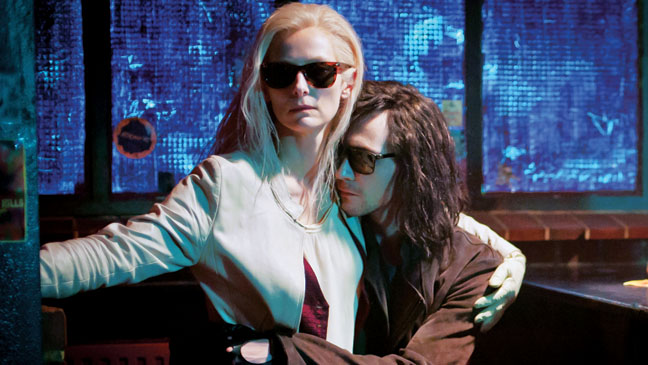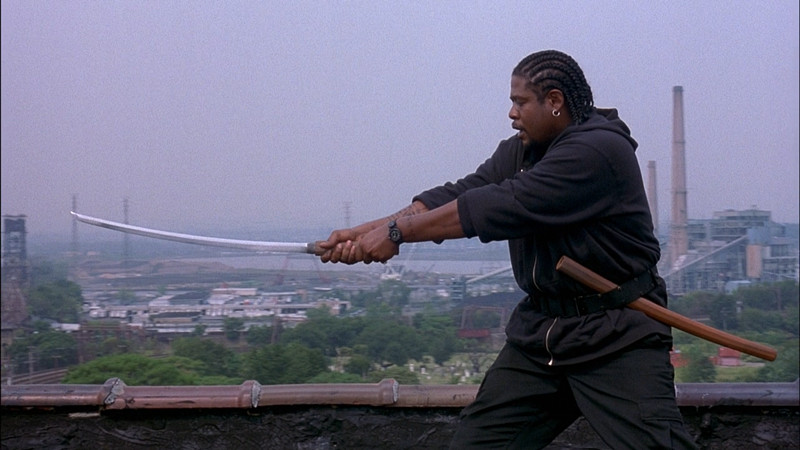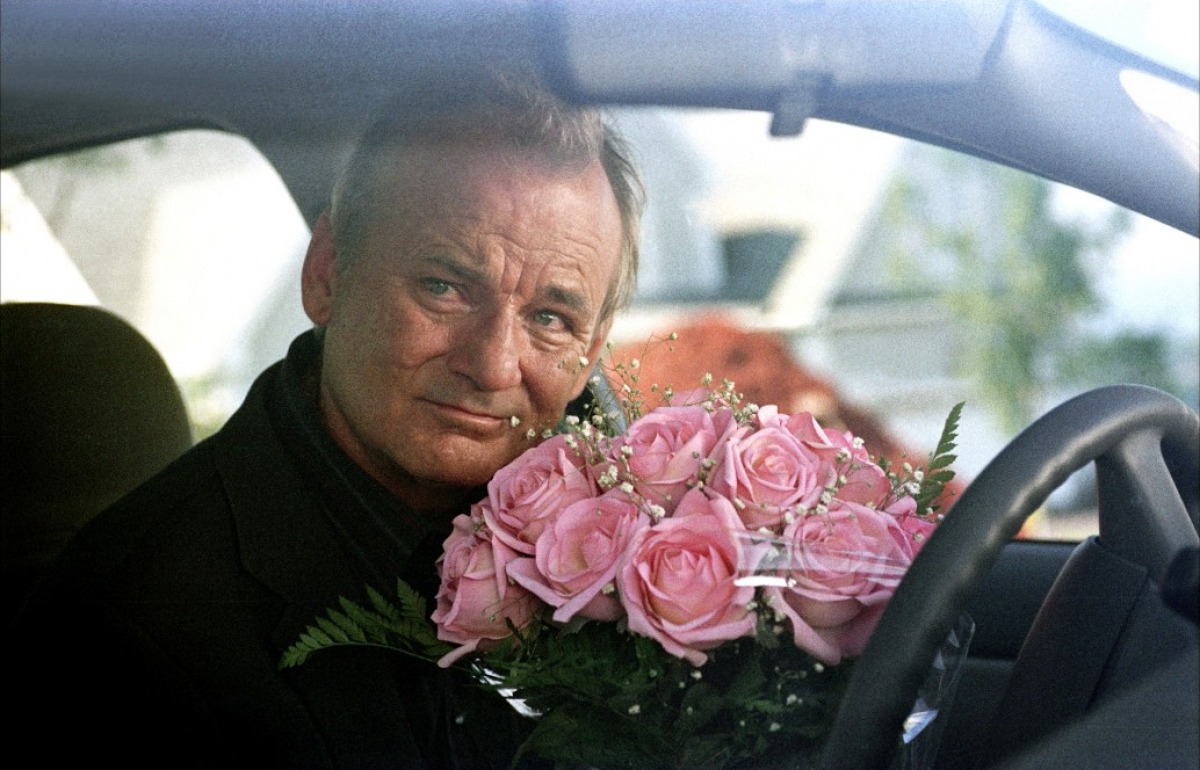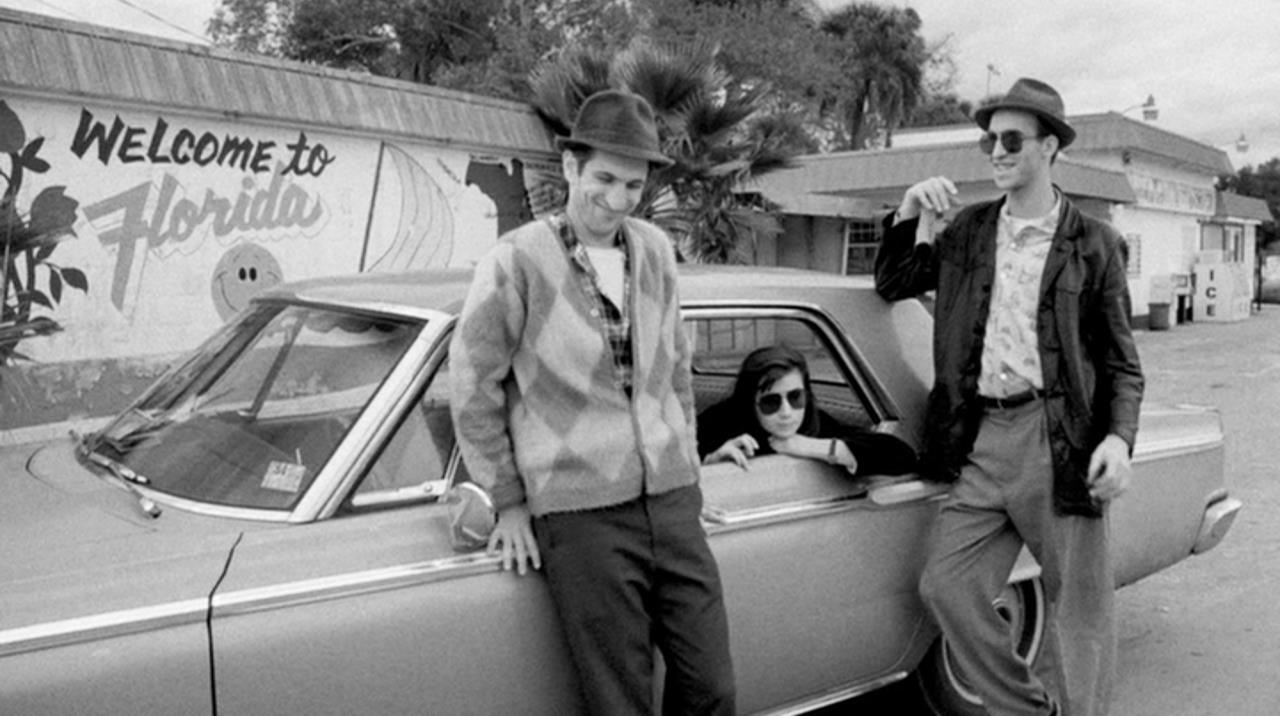6. Musicians as protagonists

Jarmusch’s interpretation of the vampire stereotype is totally different from whatever has been previously narrated. Instead of anything else, he hangs onto the fact that a vampire can stop aging and remains forever young, and rightfully he decides that whoever longs to stay alive forever should have a rising interest in living and constantly appreciating life. His vampires are artists and as any artist they keep admiring living kinds, life and youth.
Choosing musicians and artists as the main characters can also explain why these characters are loners – because of the simple fact that their mode of self expression is not through words. William Blake in “Dead Man”, after coming to the belief that the soul of the dead poet has been materialized and reincarnated through his body, starts expressing himself and creating artistic images through violence.
Musicians and artists in general, dead or alive, as main characters or secondaries are always present in Jarmusch’s narratives. Choosing a musician as the main character gives the filmmaker the benefit of dramatically justifying the source of music. Though in Jarmusch’s films, the use of music is mostly extra-diegetic, and through using a character who express him or herself through music, it heralds and facilitates the presence of music in the scene.
7. Eastern philosophy, mystification

The unfamiliarity of Eastern cultures and philosophies in a Western context creates a sense of exoticism in Jarmusch’s films.
Using the lute as the main musical instrument in “Only Lovers Left Alive”, Native American spiritual beliefs in “Dead Man”, references to the samurai philosophy of life in “Ghost Dog”, and the Ethiopian jazz that accompanies Don’s trip in “Broken Flowers” are perfect example of Jarmusch’s approach and interest in Eastern philosophy and culture.
8. Passive characters, the importance of secondary characters

This is the main repeated element in almost every story by Jarmusch. The main characters (protagonists) don’t seem to have enough motivation to follow the storyline, and there’s always a secondary character that forces the protagonist to follow the dramatic flow.
Don doesn’t seem to have the will to move from his couch if not for Winston, being familiar with mystery novels, tries to mark out any potential dramatic point of the story and even choosing the proper music (in his opinion) for the situation, pushing Don forcefully in his car and encouraging him to follow the story until the end.
The same thing happens with William Blake, who has no intention of actively following the dramatic line and Nobody (Gary Farmer) harshly drags Blake into believing what Nobody is actually suggesting to him. Blake, the passive accountant, is dead at the very beginning of this story; the one who is still alive and expresses his poetry through shooting his gun is Blake the poet, whom everyone believed to be dead.
Adam in “Only Lovers Left Alive” is ready to give up his infinite youth lifetime and Eve is the one who persuades him to go on. This mode of treating the characters in the screenplay reflects perfectly Jarmusch’s approach in confronting a dramatic situation.
9. Narrative episodes

Some of Jarmusch’s films evidently are narrated as separate episodes. The only thing that connects the episodes in “Night on Earth” is the fact that all the stories take place in a taxi driving through the city, which is the main location, and location is the very element that ties the episodes in “Coffee and Cigarettes” together.
In “Dead Man”, repetitive fades to black divide the whole united story in separate episodes, while in “Only Lovers Left Alive”, the characters up to a certain point are physically living in distant locations.
10. Feature film structured as a music video

Apart from the fact that music in Jarmusch’s films represents a subjective approach toward the story on a whole, using car scenes and POV shots accompanied by music (logically we presume that this music is playing through the car stereo) recreates a familiar situation that almost anyone has experienced. Looking out of the car while listening to music can turn any daily, trivial fact into a direct, meaningful and subjective reflection of that very music.
If the filmmaker is using the POV of the character entering the dramatic situation, it means that we are the character; he’s counting on our direct sympathy with the lone passive protagonist, using these musical subjective intervals to actually speed up this connection.
Author Bio: Maryam Raz is a freelance filmmaker and screenwriter. La Mite based on The Gentle Spirit of Dostoyevsky is her most recent work.